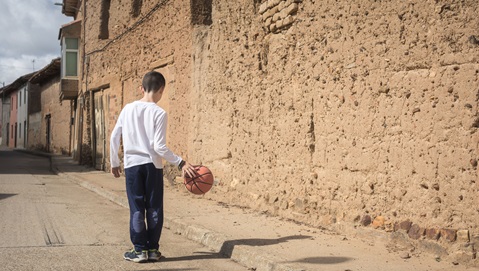In the coming decades, Spain will undergo a reduction in average rainfall and increase in temperatures and frequency of heat waves.

In addition to the effects of climate change, there are the effects of depopulation in some areas and globalisation of agricultural trade, which affects the whole country, although with special incidence in certain regions. Specifically, 2,858 Spanish municipalities are comparatively more vulnerable to these effects, according to the study "Beyond 'Empty Spain': climate change, depopulation and globalisation in rural areas", conducted by the Social Observatory of the "la Caixa" Foundation.
Researchers Sergio Villamayor-Tomas, Daniel Gaitán Cremaschi, Beatriz Pierri-Daunt and Leticia Santos de Lima from the Institute of Environmental Science and Technology of the Universitat Autònoma de Barcelona (ICTA-UAB), and Esteve Corbera, from ICTA-UAB and the Catalan Institute of Advanced Research and Studies (ICREA), have analysed the degree of vulnerability to climate change, depopulation and the globalisation of farming in over 8,000 municipalities and counties making up rural Spain. They then classified them into one of the following four regional clusters: Emptied and Economically Marginalised Spain; Economically Resistent but Drying Out Spain; Eroded Spain; and Exporter Spain.
The "Four Spains"
The first of these four groups is the one researchers named Emptied and Economically Marginalised Spain, which is the most vulnerable set and includes 2.858 municipalities, located mainly in the centre of Northern Spain (particularly in the regions of Castilla y León and part of Aragón). Altogether they represent 21% of Spain's territory.
This first group includes areas with a more pronounced decrease in the natural growth rate and where the proportion of older people for each young person is greatest. It also comprises the highest proportion of small population towns (less than 500 inhabitants). From an economic point of view, these areas are the ones most affected by the decrease in prices paid to agricultural producers. They are also areas with a lower number of registered companies and poor social and road infrastructures.
The second group, defined in the study as Economically Resistent by Drying Out Spain, comprises 1,112 municipalities distributed especially in the mountain ranges and on the perimeter of the first group, and makes up 13% of the territory. This cluster also has a high proportion of small population towns, municipalities affected by the decrease in natural population growth and areas with deficient road infrastructures. It also has a greater decrease in average annual rainfall. Nevertheless, it has the highest proportion of protected areas and the highest number of registered companies.
The third is called Eroded Spain and is made up of 3,198 municipalities found throughout the Spanish territory, representing 54% of Spain's total territory. These municipalities are located mainly in the regions of Galicia and Asturias, as well as in the centre and south of the country. According to the study's measurements, this cluster does not present serious socioeconomic problems, but it is the group most affected by forest fires and soil erosion.
The fourth and last group is what the authors describe as Exporter Spain, made up of 595 municipalities (5% of Spain's territory), located mostly in very specific enclaves close to coastal areas and large cities. This is the least vulnerable group, according to the parameters analysed. Even so, the authors point out that its particular weakness is related to its exposure to the globalisation of agricultural trade, given its greater dependence on exports.
The authors define the concept of globalisation of agricultural trade as the consolidation of a food production and consumption system dominated by multinational companies, global markets and prices, and based on intensive and highly mechanised production of export products, and on the search for short-term profitability, among other characteristics.
In this last group, researchers also highlight two peculiarities: it is the one that depends to a greater extent on irrigated agriculture and the one with the lowest proportion of protected areas. All these results are shown in the following graph:
"Spain's municipalities can be listed according to whether they are more or less vulnerable to climate change, depopulation and globalisation. The degree to which they are affected by specific aspects of these three threats is what has allowed us to classify them into four Spains," says Sergio Villamayor-Tomas, researcher at the Institute for Environmental Science and Technology (ICTA-UAB) and co-author of the study.
Rural development policies
The authors of the study "Beyond 'Empty Spain': climate change, depopulation and globalisation in rural areas", by the Social Observatory of the "la Caixa" Foundation, consider that adaptation to climate change, mitigation of depopulation and the defense of agricultural incomes must be accompanied by agricultural policies and a more integrated rural development from a socio-environmental point of view.
"Following this analysis, there are processes that are worth studying further, such as the relationship between drought and heat waves, rural abandonment, the disappearance of family farms, the concentration of land in large companies, agricultural intensification and desertification," emphasisesd ViIlamayor-Tomas. And he added: "Our analysis warns of the need to review CAP (Common Agricultural Policy) aid from the point of view of its capacity to address environmental and social problems in an integrated manner. The programme for the incorporation of young farmers, for example, contributes to generational replacement and therefore to mitigating depopulation, but it also promotes a model of intensive and mechanised large-scale farming, of dubious adaptive capacity in the face of climate change and the volatility of agricultural markets".






